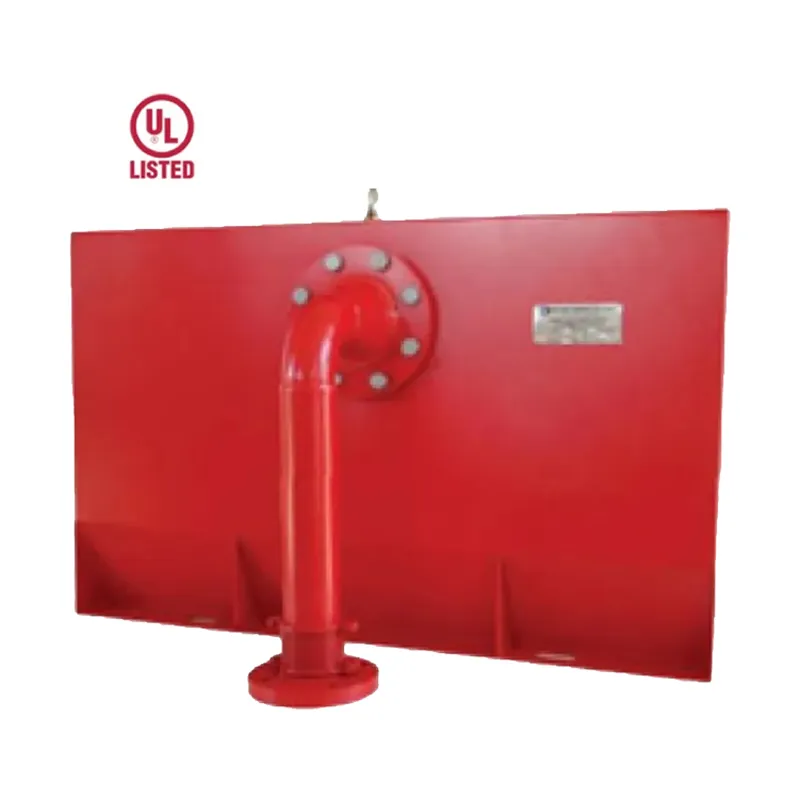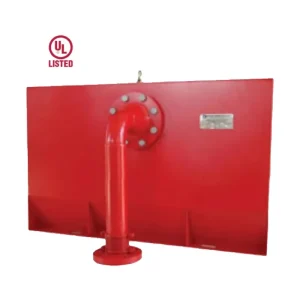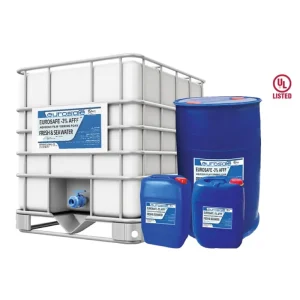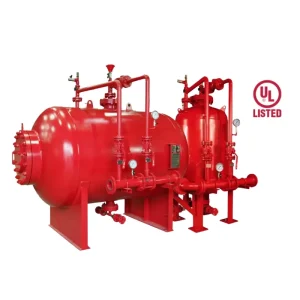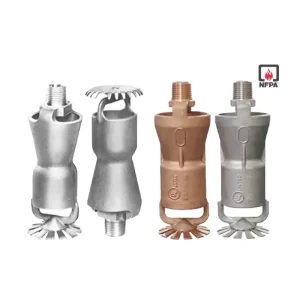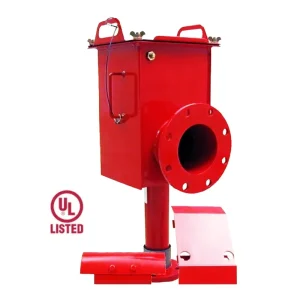Rim Seal Foam Pourer
Material:carbon steel or stainless steel
Color:Red
Flow:159~569LPM
Working Pressure:2.8~7bar
Size:2.5”
Description
1.The Rim Seal Foam Pourer is designed to deliver fully aspirated foam directly to the annular seal area of open top floating roof tank. It is used for one of the most common applications of protecting tank seal in vertical liquid storage tank with interna l floating roof with low expansion foam system. RPA consists mainly of Foam Maker, a windshield and an integral deflector.
2.The application of aspirated foam is on the basis of the risk comprising the area in the annular ring between the rim of the floating roof and the tank shell. The Rim Seal Foam Pourers are widely used with Inline Foam Inductor, Balance Pressure Foam Proportioning System, Bladder Tank system or Foam tenders.
Specification
1.The Foam system design guidelines generally used are in accordance with NFPA 11 standard. Rim Seal Foam Pourers are defined by NFPA 11 as Type II discharge outlets for delivering the low expansion aspirated foam to the seal.
2.The rim seal foam pourer covers a wide range of foam solution rates from 50 to 550 liters per minute at 2.8 to 7 kg/ sq.cm inlet pressure.
3.Each rim seal foam pourer is supplied with an orifice plate, designed for the required flow at inlet pressure. The orifice is field replaceable in the event of change in design parameters.
4.The foam is produced by introducing air into the foam solution stream. The inlet of foam maker is designed to create venturi jet which draws air into the foam solution stream. The air is drawn into the foam solution through holes located on the foam maker covered with stainless steel screen to exclude nesting birds and insects.
2.The rim seal foam pourer covers a wide range of foam solution rates from 50 to 550 liters per minute at 2.8 to 7 kg/ sq.cm inlet pressure.
3.Each rim seal foam pourer is supplied with an orifice plate, designed for the required flow at inlet pressure. The orifice is field replaceable in the event of change in design parameters.
4.The foam is produced by introducing air into the foam solution stream. The inlet of foam maker is designed to create venturi jet which draws air into the foam solution stream. The air is drawn into the foam solution through holes located on the foam maker covered with stainless steel screen to exclude nesting birds and insects.
Installation, Testing & Maintenance
1.Carefully unpack Rim Seal Pourer. While unpacking and installation it is to be handled with care and shocks to be avoided.Check visually for any damages.
2.While installing, ensure that the Rim Seal Pourer is not under stress due to any misalignments in installation or variations of system piping. Ensure that the strainer assembly is clear from any blockages or damages. If strainer assembly is either blocked or damaged, it will adversely affect the performance of the equipment.
3.Qualified and trained person must commission the system. After few initial successful tests, an authorized person must be trained to perform inspection and testing of the system.
4.It is recommended to carry out physical inspection of the system regularly. The system must be fully tested at least once in a year or in accordance to the standards of the organization having local jurisdiction.
5.Do not turn off the system or any valve to make repair or test the system, without placing a roving Fire Patrol in the area
covered by the system. The Patrol should continue until the system is put back in service. Also inform the local security guard and control alarm station, so as to avoid false alarm. Each system is to be flushed properly.
6.To test the RPA without discharging the foam into the tank seal area, the RPA is to be rotated 180° away from the wind shield.The air screen is to be inspected periodically for obstruction of air inlet holes. If any obstruction is noticed, remove the same and flush, if necessary.
7.The RPA outlet and pourer, if exposed to atmospheric condition, should be periodically inspected for nest and other obstructions. The obstruction, if noticed, must be removed and flushed to clear the discharge path. The owner is responsible for testing, inspection and maintenance of the Rim Seal Foam Pourer.
Оставьте свое сообщение




